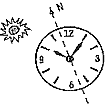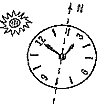閱讀理解���。
When a cat is frightened, its heart starts beating faster, its muscles get tense, and there are changes in
the chemicals in its blood stream. If the danger continues, it will defend itself, or it will run away as fast
as possible. Something like this also happens to people.
When we are excited, angry, scared or aroused by other emotions, our bodies go through many physical
changes, all of which make us more alert and ready to react. We, too, get ready to defend ourselves or run.
Human beings, however, have a problem that animals never face. If we give way to our feelings and let them
take over, we can get into trouble. Have you ever said something in anger-or hit somebody-and regretted it
later? Have you ever shouted at a teacher, told somebody you were lonely, or said you were in love, and then
wished later you had kept your mouth shut? It isn't always wise to express your feelings freely.
Does this mean that it's smarter always to hide our feelings? No! If you keep the feelings of anger,
sadness, and bitterness hidden away or bottled up inside, your body stays tense. Physical illnesses can develop,
and you can feel disturbed badly inside. It can actual1y be bad for your health.
Feelings that you keep all bottled up inside don't just go away. It's as if you bought some bananas and stuck
them in a cupboard. You might not be able to see them, but before long you'd smell them. And if you opened
the cupboard, chances are that you'd see little fruit flies hovering all over them. They'd be rotten.
You can try to treat emotions as if they were bananas in the cupboard. You can hide them and you can
pretend they don't exist, but they'll still be around. And at last you'll have to deal with them, just like those
bananas.
1. By taking a cat as an example, the author wants to show us that _____.
A. animals can't control their feelings
B. people can't control their feelings
C. people's physical reactions are like those of animals in a way
D. our bodies go through many physical changes in certain situations
2. It's mentioned in the passage that human beings get into trouble because _____.
A. we are not as alert as animals
B. we sometimes can't control our feelings
C. we always do something wrong to other people
D. we don't pay attention to our physical changes
3. The author wants to tell us in the last two paragraphs that _____.
A. we won't be able to completely get away from our feelings
B. we should treat emotions like bananas in a cupboard
C. feelings will gradually disappear when we hold them in
D. it's good for our health to keep pleasant feelings
4. What would be the best title for the passage?
A. Frightened Cats and Human Beings
B. Feelings and Bananas
C. Deal with Feelings Wisely
D. Express Feelings Freely




